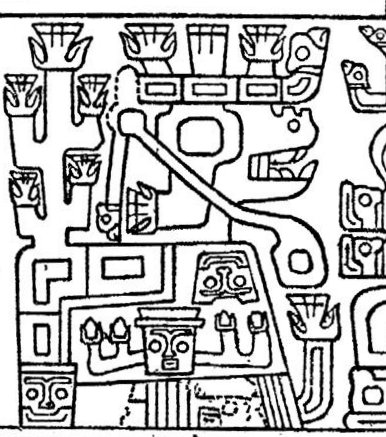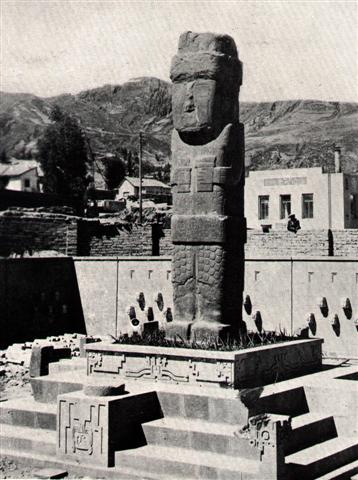2. It is rather easy to understand myths, because they are meant to be easily understood on a superficial level. Everybody must be able to enjoy the stories. But attention should be paid to the details, they are embedded in order to carry knowledge from one generation to the next. Therefore we must on one hand carry on with studying the stories presented in Manuscript E - they are many more than the one about the kuhane journey. On the other hand we must also continue the study of pictures, e.g. once again the 'hippopotamus face' on the border between the front and back sides of the Pachamama statue:
Each time we will look again we can discover new pieces to our great puzzle. There is a tree formed like a cactus with 5 fire signs at the back of her head, and the back side probably indicates it lies in the past. I.e. there are 5 fires in the past. Together with those 3 at the beginning of the row it becomes 8:
In the face of the 'hippopotamus' I have earlier found the movement of Spring Sun to be illustrated by the 'path' leading forwards and down from the 'fist' sign at her temple, down to a 'pool of water'. But we should also perceive in the background (presumably meaning the female Moon instead of the male Sun) another shorter and broader path leading upwards from a horizontally oriented fire sign to her great eye. This 9th fire 'spells death' (the flames are not rising), with a rebirth ahead in form of a great eye (i.e. a great season). The 'hippopotamus' is located on the side of the statue, which has a rectangular cross-section:
The side of something corresponds to the 'twilight zone' between the front and the back, and thus for instance a season between summer respectively winter. A hippopotamus is mostly down in the water but she can also walk on land. She is an amphibian and therefore she corresponds to the lively period of spring. In autumn Sun will have disappeared and there is no such transitional season of life, it is instead a season of offspring, a transitional season of death. |


